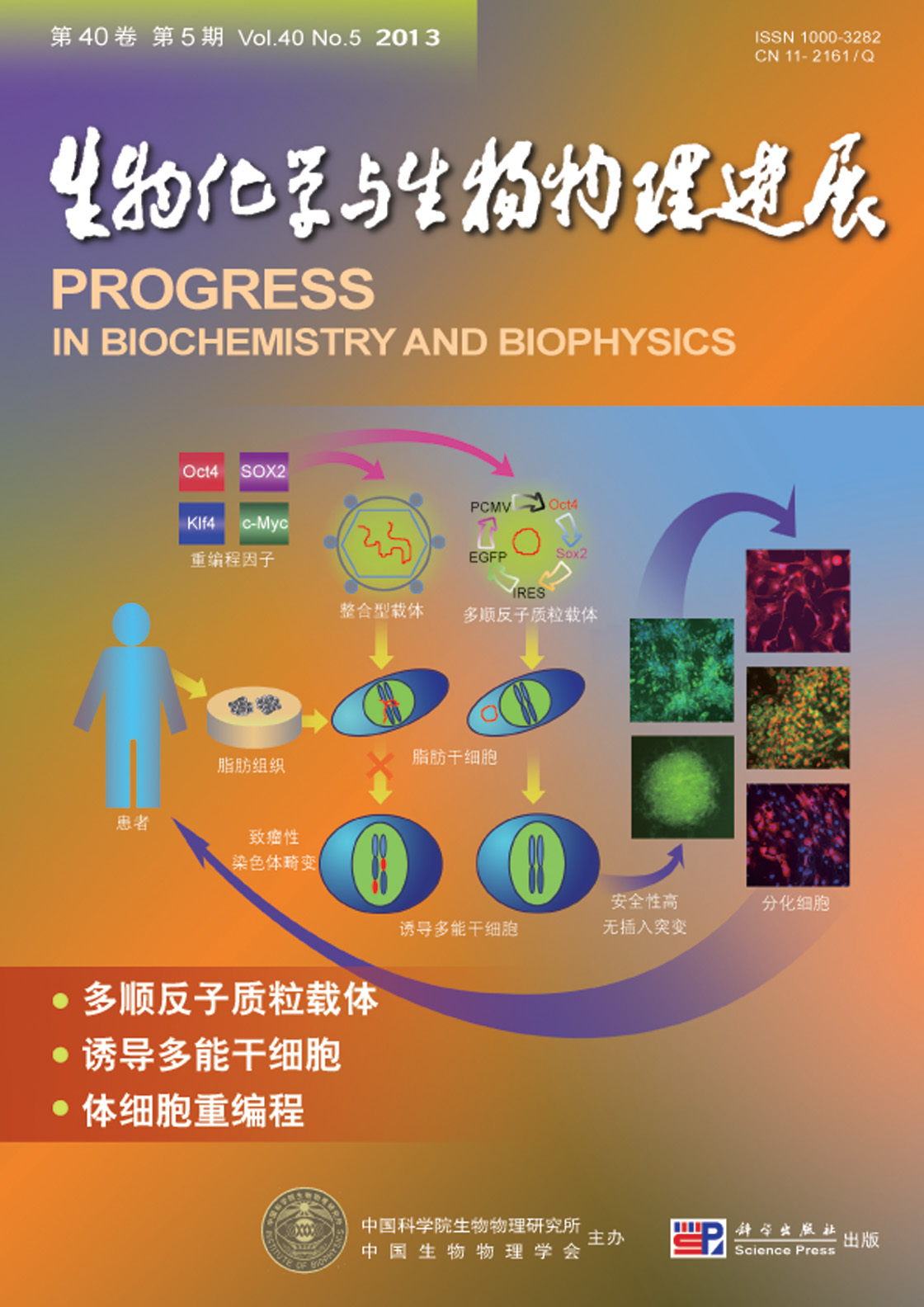Vol.40,No.5,2013
| |

|
Cover Story:In order to establish a polycistronic plasmid delivery system that reprogram human adipose stem cells (ASCs) into induced pluripotency stem cells(iPSCs), a polycistronic plasmid vector was constructed in which defined factors were fused in-frame into a single open reading frame via self-cleaving 2A sequences. The iPSCs were generated at 3~4 weeks after ASCs have been transiently transfected with the polycistronic plasmid. Then, the iPSCs were identified subsequently via the morphological observation, immunofluorescence with specific antigen, embryoid body formation in vitro and teratoma formation in vivo. The results demonstrated that the characteristics of these generated iPSCs resembled embryonic stem cells (ESCs) in terms of the expression of pluripotent markers, and the ability to differentiate into the three embryonic germ layers in vitro by embryoid body generation together with in vivo by teratoma formation after injection into immunodeficient mice. Remarkably, Southern bolt revealed that the human iPSCs were not integrated with plasmid DNA sequence. Therefore, hASCs derived iPSCs has the pluripotency using polycistronic plasmid method, which provides a useful platform for the further study of hereditary or degenerative disease therapies with the potential to bypass both the insertional mutagenesis and immune rejection barriers.
|
Reviews and Monographs
Short Communications
Research Papers
Techniques and Methods
|
|
